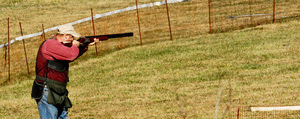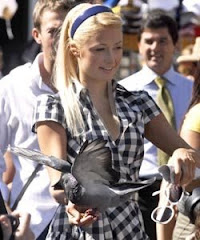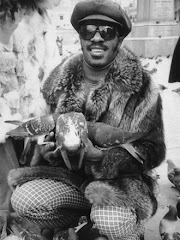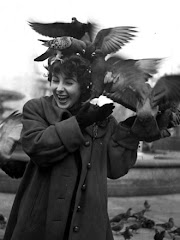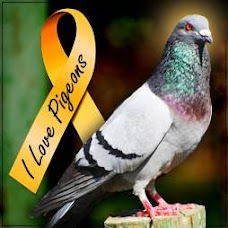One of the most common OvoControl® questions is, "how well does it work?" The answer to this question actually has two parts, 1) how well does OvoControl interfere with egg hatchability? and, 2) how quickly will OvoControl reduce the population of birds?
Egg Hatchability
The active ingredient in OvoControl, nicarbazin, interferes with egg development and acts as a contraceptive in birds. The egg hatchability effects of nicarbazin are well documented and characterized in the scientific literature and the data is indisputable - if a bird eats the bait daily and in an adequate quantity, the eggs will simply not hatch. As occurs frequently in nature, birds will abandon a failed nest and try again.
Population Effects
The rate at which a pigeon population declines depends on a range of variables, primarily related to site-specific characteristics. Controlling variables in a free ranging population of birds is obviously challenging. Nevertheless, the data reported in the US (Linda Vista) is consistent with what has been reported in Italy. The absence of successful reproduction, in combination with natural attrition, reduces the population of birds at a rate of approximately 50%, annually.
OvoControl reduces the population of birds - gradually and predictably - all without the risks of a toxicant or need to remove dead or dying birds.
For more details, see the new 2-page white paper for OvoControl Efficacy on the company website at www.OvoControl.com.
OvoControl® is a registered trademark of Innolytics, LLC, Rancho Santa Fe, CA.
Monday, April 27, 2009
Saturday, April 4, 2009
The Death of the Passenger Pigeon
The story of the Passenger Pigeon is one of the most tragic extinction stories in modern times. As recently as around 200 years ago they weren’t anywhere near extinction. In fact, they were actually the most common bird in North America, and some reports counted single flocks numbering in the billions.
During some migrations, the flocks flying overhead would stretch for over a mile and could take several hours to pass. It would have been impossible to imagine a North American skyline without them. Yet somehow the species went from being one of the most abundant birds in the world to extinction in only about 100 years. What happened?
Colonial hunters happened. The pigeon meat was commercialized and recognized as cheap food, especially for slaves and the poor, which led to a catastrophic hunting campaign on a massive scale. Furthermore, due to the large size of their flocks, the birds were seen as a threat to farmers. In fact, in 1703 the Catholic bishop of Quebec actually excommunicated the entire species.
The last known Passenger Pigeon, named “Martha”, died in captivity on September 1st, 1914, in Cincinnati, Ohio. In 1896, the last flock of 250,000 birds were slaughtered by hunters despite the knowledge that it was the last flock of that size left.
During some migrations, the flocks flying overhead would stretch for over a mile and could take several hours to pass. It would have been impossible to imagine a North American skyline without them. Yet somehow the species went from being one of the most abundant birds in the world to extinction in only about 100 years. What happened?
Colonial hunters happened. The pigeon meat was commercialized and recognized as cheap food, especially for slaves and the poor, which led to a catastrophic hunting campaign on a massive scale. Furthermore, due to the large size of their flocks, the birds were seen as a threat to farmers. In fact, in 1703 the Catholic bishop of Quebec actually excommunicated the entire species.
The last known Passenger Pigeon, named “Martha”, died in captivity on September 1st, 1914, in Cincinnati, Ohio. In 1896, the last flock of 250,000 birds were slaughtered by hunters despite the knowledge that it was the last flock of that size left.
Wednesday, April 1, 2009
How Pigeons Serve Mankind
Messenger/Homing Pigeons
Homing pigeons are called messenger pigeons when they are used to carry messages. Messages have to be written on light, thin paper (such as cigarette paper) and rolled into a small tube that is attached to the bird's leg. This is called "pigeon post." Pigeons reach speeds between 60 - 80 miles per hour. They can fly up to 80 to 600 miles in one single day.
The Carrier of Messages:
During the Franco-Prussian War of 1870–1871, the Prussians had surrounded the city of Paris preventing mail from entering or leaving the city. During the course of the siege, pigeons and mail were regularly taken out of Paris by hot-air balloons. The letters that were sent to Paris were first reduced in size by photography, so that 30,000 letters could be carried on film placed inside a canister. These canisters were attached to pigeons and the pigeons then flew into Paris. Thirty-five pigeons carried the same letters, so that if any were shot down, at least one would reach Paris. In Paris, the film was projected on a screen, and the letters were copied by hand and delivered to homes in the city.
Pigeon have been used to transport short messages across long distances. In fact, historically well-known leaders, such as Julius Caesar and Genghis Khan, have used pigeons to carry important messages across long distances.
One of the world’s best known news agencies, Reuters, started its European business by using 45 trained homing pigeons to carry financial news on the continent in 1850. The pigeons carried the latest news and stock prices from Aachen in Germany to Brussels in Belgium. The homing pigeons travelled the 76 miles in a record-breaking two hours beating the railway by four hours.
The Chinese used homing pigeons to deliver mail as long ago as 1000 B.C.
Rescue Missions
A team of navy researchers trained pigeons to save human lives at sea as part of "Project Sea Hunt." Pigeons have better eyesight than humans and are, therefore, uniquely qualified for search-and-rescue missions. They were trained to identify the red or yellow life jackets of people floating in the water. The pigeons were carried by helicopters and when they saw a life jacket, they pecked a keyboard, which set off a light. Then the helicopter moved closer until the humans were able to see the life jacket.
The pigeons were not only found to be more reliable than humans but they were also many times quicker than humans when it came to spotting survivors from a capsized or sinking boat. The pigeon can see color in the same way that humans do but they can also see ultra-violet - a part of the spectrum that humans cannot see.
Wars
During the two World Wars, homing pigeons saved thousands of human lives by carrying messages across enemy lines. Pigeons were carried on ships and in the event of an attack, the messenger pigeon was released with details of the location of the sinking ship. Many lives were saved.
Pigeons also played a vital role in intelligence gathering. Hundreds of homing pigeons with the Confidential Pigeon Service were airdropped into northwest Europe to serve as intelligence vectors for local resistance agents.
World War I:
Homing pigeon "Cher Ami" was awarded the French Croix de guerre for delivering 12 important messages within the American sector at Verdun, France, despite being badly injured by enemy fire during his last trip. He carried with him an important message that led to the rescue of 194 American soldiers (now known as the "Lost Battalion," part of New York’s 77th Division of the U.S. Army), who would have otherwise perished.
World War II:
On 18 October 1943, the American homing pigeon "G.I. Joe" saved an Italian village that was scheduled to be bombed by British forces. "G.I. Joe" delivered a message about the planned attack in time to stop the bombing and his actions saved the lives of over a thousand people.
The Irish homing pigeon " Paddy" was awarded the Dickin Medal after being the first pigeon to arrive back in England with news of the success of the D-Day invasion, out of hundreds dispatched. He flew 230 miles across the English Channel in four hours and five minutes - the fastest recorded crossing.
Celebrations
White homing pigeons are released at weddings, funerals, and some sporting events. After the "release" - the pigeons will fly black to their lofts.
Homing pigeons are called messenger pigeons when they are used to carry messages. Messages have to be written on light, thin paper (such as cigarette paper) and rolled into a small tube that is attached to the bird's leg. This is called "pigeon post." Pigeons reach speeds between 60 - 80 miles per hour. They can fly up to 80 to 600 miles in one single day.
The Carrier of Messages:
During the Franco-Prussian War of 1870–1871, the Prussians had surrounded the city of Paris preventing mail from entering or leaving the city. During the course of the siege, pigeons and mail were regularly taken out of Paris by hot-air balloons. The letters that were sent to Paris were first reduced in size by photography, so that 30,000 letters could be carried on film placed inside a canister. These canisters were attached to pigeons and the pigeons then flew into Paris. Thirty-five pigeons carried the same letters, so that if any were shot down, at least one would reach Paris. In Paris, the film was projected on a screen, and the letters were copied by hand and delivered to homes in the city.
Pigeon have been used to transport short messages across long distances. In fact, historically well-known leaders, such as Julius Caesar and Genghis Khan, have used pigeons to carry important messages across long distances.
One of the world’s best known news agencies, Reuters, started its European business by using 45 trained homing pigeons to carry financial news on the continent in 1850. The pigeons carried the latest news and stock prices from Aachen in Germany to Brussels in Belgium. The homing pigeons travelled the 76 miles in a record-breaking two hours beating the railway by four hours.
The Chinese used homing pigeons to deliver mail as long ago as 1000 B.C.
Rescue Missions
A team of navy researchers trained pigeons to save human lives at sea as part of "Project Sea Hunt." Pigeons have better eyesight than humans and are, therefore, uniquely qualified for search-and-rescue missions. They were trained to identify the red or yellow life jackets of people floating in the water. The pigeons were carried by helicopters and when they saw a life jacket, they pecked a keyboard, which set off a light. Then the helicopter moved closer until the humans were able to see the life jacket.
The pigeons were not only found to be more reliable than humans but they were also many times quicker than humans when it came to spotting survivors from a capsized or sinking boat. The pigeon can see color in the same way that humans do but they can also see ultra-violet - a part of the spectrum that humans cannot see.
Wars
During the two World Wars, homing pigeons saved thousands of human lives by carrying messages across enemy lines. Pigeons were carried on ships and in the event of an attack, the messenger pigeon was released with details of the location of the sinking ship. Many lives were saved.
Pigeons also played a vital role in intelligence gathering. Hundreds of homing pigeons with the Confidential Pigeon Service were airdropped into northwest Europe to serve as intelligence vectors for local resistance agents.
World War I:
Homing pigeon "Cher Ami" was awarded the French Croix de guerre for delivering 12 important messages within the American sector at Verdun, France, despite being badly injured by enemy fire during his last trip. He carried with him an important message that led to the rescue of 194 American soldiers (now known as the "Lost Battalion," part of New York’s 77th Division of the U.S. Army), who would have otherwise perished.
World War II:
On 18 October 1943, the American homing pigeon "G.I. Joe" saved an Italian village that was scheduled to be bombed by British forces. "G.I. Joe" delivered a message about the planned attack in time to stop the bombing and his actions saved the lives of over a thousand people.
The Irish homing pigeon " Paddy" was awarded the Dickin Medal after being the first pigeon to arrive back in England with news of the success of the D-Day invasion, out of hundreds dispatched. He flew 230 miles across the English Channel in four hours and five minutes - the fastest recorded crossing.
Celebrations
White homing pigeons are released at weddings, funerals, and some sporting events. After the "release" - the pigeons will fly black to their lofts.
Labels:
Cher Ami,
G.I. Joe,
homing pigeons,
Paddy
Subscribe to:
Posts (Atom)

